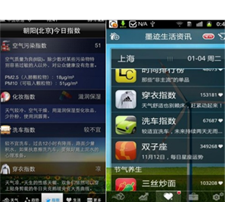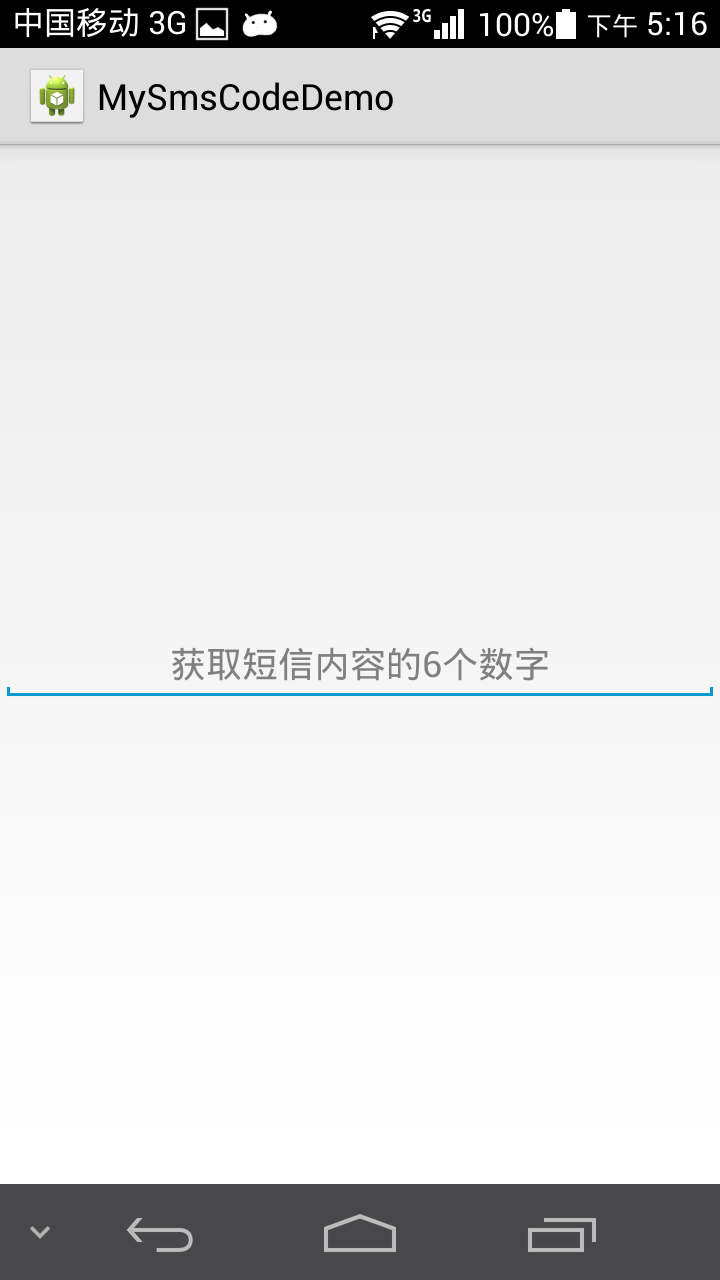把數據放入數據庫
通過把ContentValues對象傳入instert()方法把數據插入數據庫:
// Gets the data repository in write mode
SQLiteDatabase db = mDbHelper.getWritableDatabase();
// Create a new map of values, where column names are the keys
ContentValues values = new ContentValues();
values.put(FeedReaderContract.FeedEntry.COLUMN_NAME_ENTRY_ID, id);
values.put(FeedReaderContract.FeedEntry.COLUMN_NAME_TITLE, title);
values.put(FeedReaderContract.FeedEntry.COLUMN_NAME_CONTENT, content);
// Insert the new row, returning the primary key value of the new row
long newRowId;
newRowId = db.insert(
FeedReaderContract.FeedEntry.TABLE_NAME,
FeedReaderContract.FeedEntry.COLUMN_NAME_NULLABLE,
values);
insert()方法的第一個參數是表名。第二個參數提供了框架中的一個列名,在ContentValues的值是空的時候,框架會向表中插入NULL值(如果這個參數是“null”,那麼當沒有值時,框架不會向表中插入一行。
從數據庫中讀取數據
要從數據庫中讀取數據,就要使用query()方法,你需要給這個方法傳入選擇條件和你想要獲取數據的列。查詢結果會在Cursor對象中被返回。
SQLiteDatabase db = mDbHelper.getReadableDatabase();
// Define a projection that specifies which columns from the database
// you will actually use after this query.
String[] projection = {
FeedReaderContract.FeedEntry._ID,
FeedReaderContract.FeedEntry.COLUMN_NAME_TITLE,
FeedReaderContract.FeedEntry.COLUMN_NAME_UPDATED,
...
};
// How you want the results sorted in the resulting Cursor
String sortOrder =
FeedReaderContract.FeedEntry.COLUMN_NAME_UPDATED + " DESC";
Cursor c = db.query(
FeedReaderContract.FeedEntry.TABLE_NAME, // The table to query
projection, // The columns to return
selection, // The columns for the WHERE clause
selectionArgs, // The values for the WHERE clause
null, // don't group the rows
null, // don't filter by row groups
sortOrder // The sort order
);
使用Cursor對象的移動方法來查看游標中的一行數據,在開始讀取數據之前必須先調用這個方法。通常,應該從調用moveToFirst()方法開始,它會把讀取數據的位置放到結果集中第一實體。對於每一行,你可以通過調用Cursor對象的相應的get方法來讀取列的值,如果getString()或getLong()方法。對於每個get方法,你必須把你希望的列的索引位置傳遞給它,你可以通過調用getColumnIndex()或getColumnIndexOrThrow()方法來獲取列的索引。例如:
cursor.moveToFirst();
long itemId = cursor.getLong(
cursor.getColumnIndexOrThrow(FeedReaderContract.FeedEntry._ID)
);
從數據庫中刪除數據
要從一個表中刪除行數據,你需要提供標識行的選擇條件。數據API為創建選擇條件提供了一種機制,它會防止SQL注入。這中機制把選擇條件分成了選擇條件和選擇參數。條件子句定義了要查看的列,並且還允許你使用組合列來進行篩選。參數是用於跟條件綁定的、用戶篩選數據的值。因為這樣不會導致像SQL語句一樣的處理,所以它避免了SQL注入。
// Define 'where' part of query.
String selection = FeedReaderContract.FeedEntry.COLUMN_NAME_ENTRY_ID + " LIKE ?";
// Specify arguments in placeholder order.
String[] selelectionArgs = { String.valueOf(rowId) };
// Issue SQL statement.
db.delete(table_name, selection, selectionArgs);
更新數據庫
當你需要編輯數據庫值的時候,請使用update()方法。
這個方法在更新數據時會把insert()方法中內容值的語法跟delete()方法中的where語法結合在一起。
SQLiteDatabase db = mDbHelper.getReadableDatabase();
// New value for one column
ContentValues values = new ContentValues();
values.put(FeedReaderContract.FeedEntry.COLUMN_NAME_TITLE, title);
// Which row to update, based on the ID www.2cto.com
String selection = FeedReaderContract.FeedEntry.COLUMN_NAME_ENTRY_ID + " LIKE ?";
String[] selelectionArgs = { String.valueOf(rowId) };
int count = db.update(
FeedReaderDbHelper.FeedEntry.TABLE_NAME,
values,
selection,
selectionArgs);
分享到:
 Android消息推送:手把手教你集成小米推送(附demo)
Android消息推送:手把手教你集成小米推送(附demo)
 Android 實現蘑菇街購物車動畫效果
Android 實現蘑菇街購物車動畫效果
 Android如何通過手機自動獲取短信驗證碼
Android如何通過手機自動獲取短信驗證碼
 Android7.0 MessageQueue
Android7.0 MessageQueue